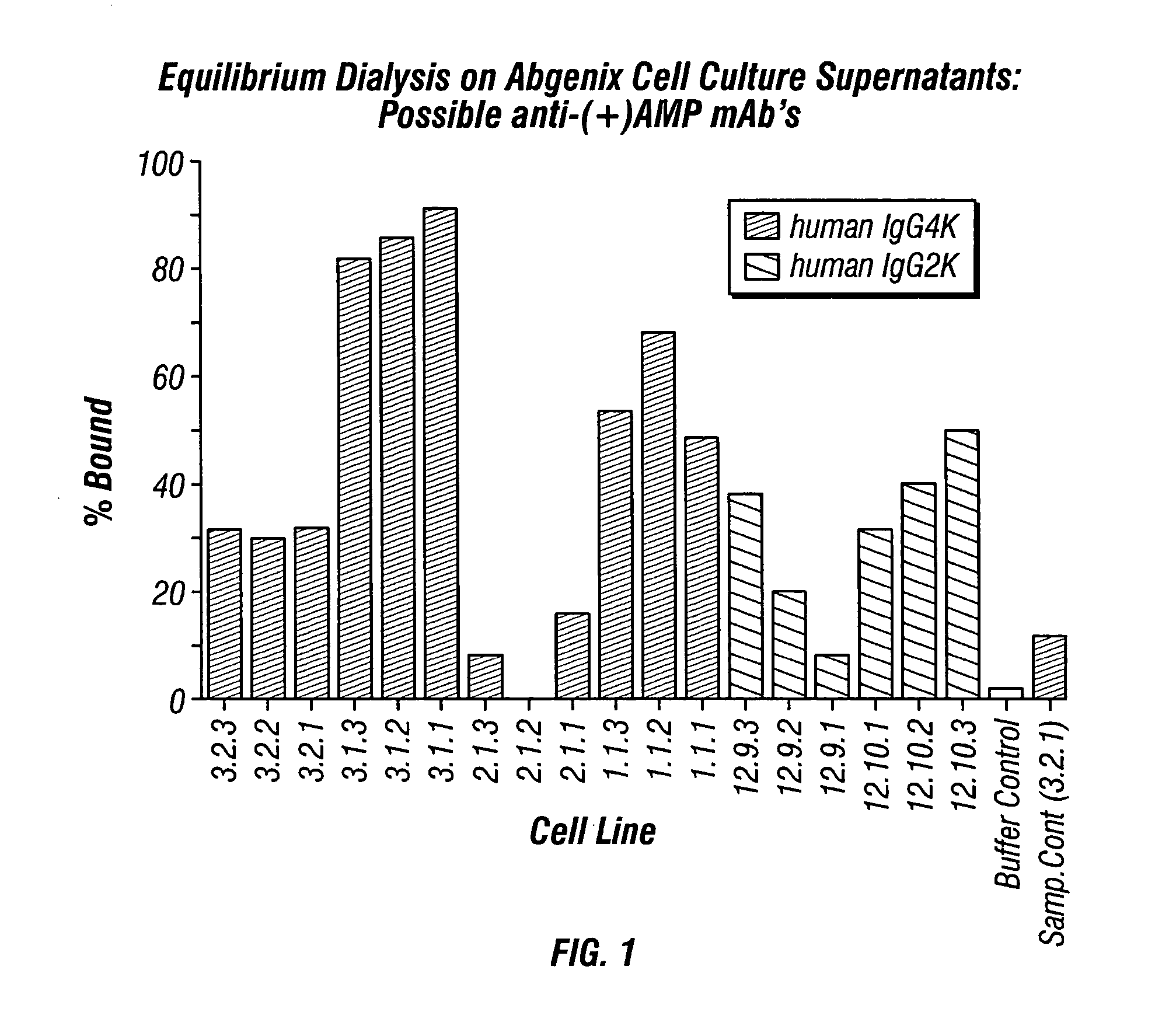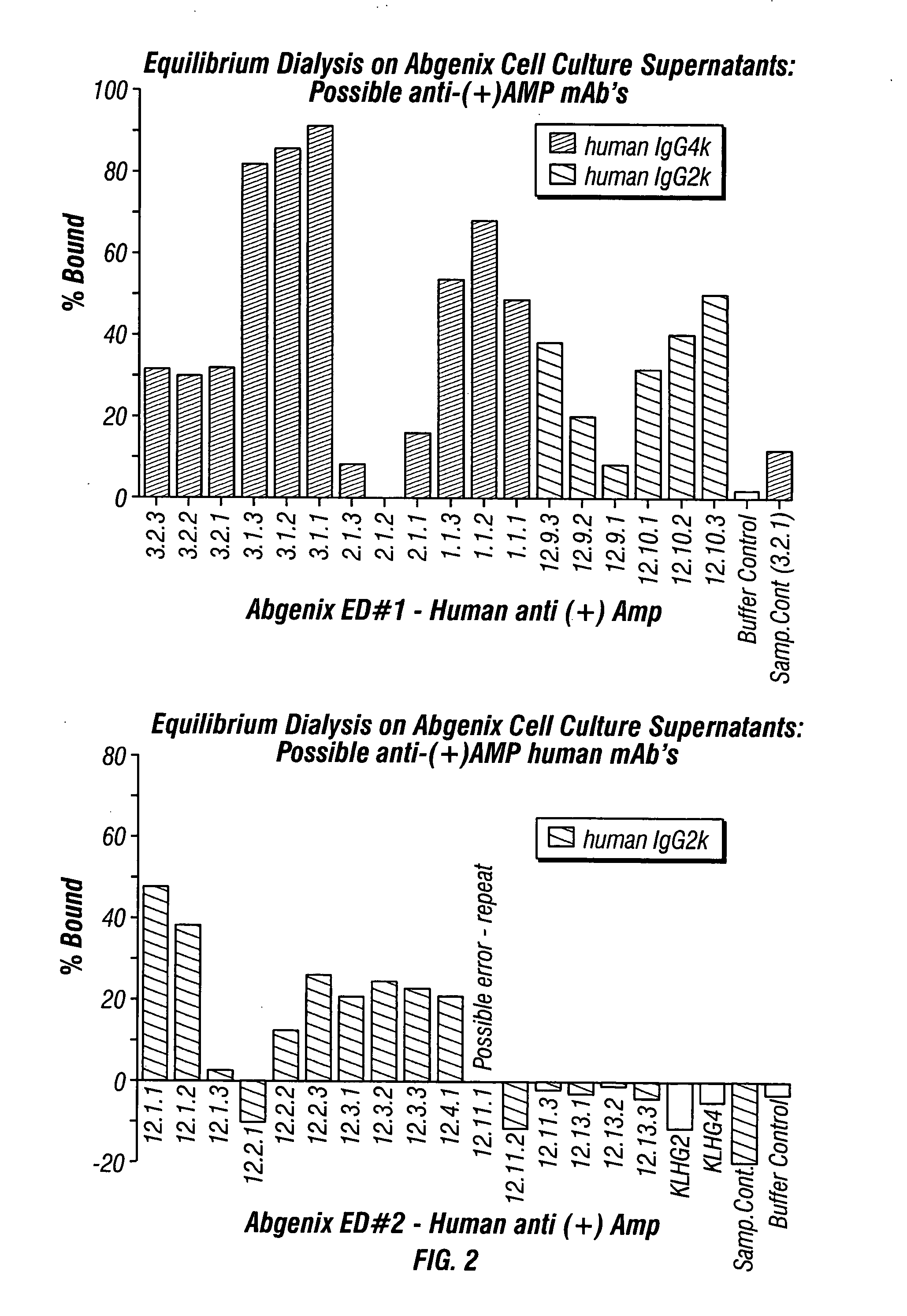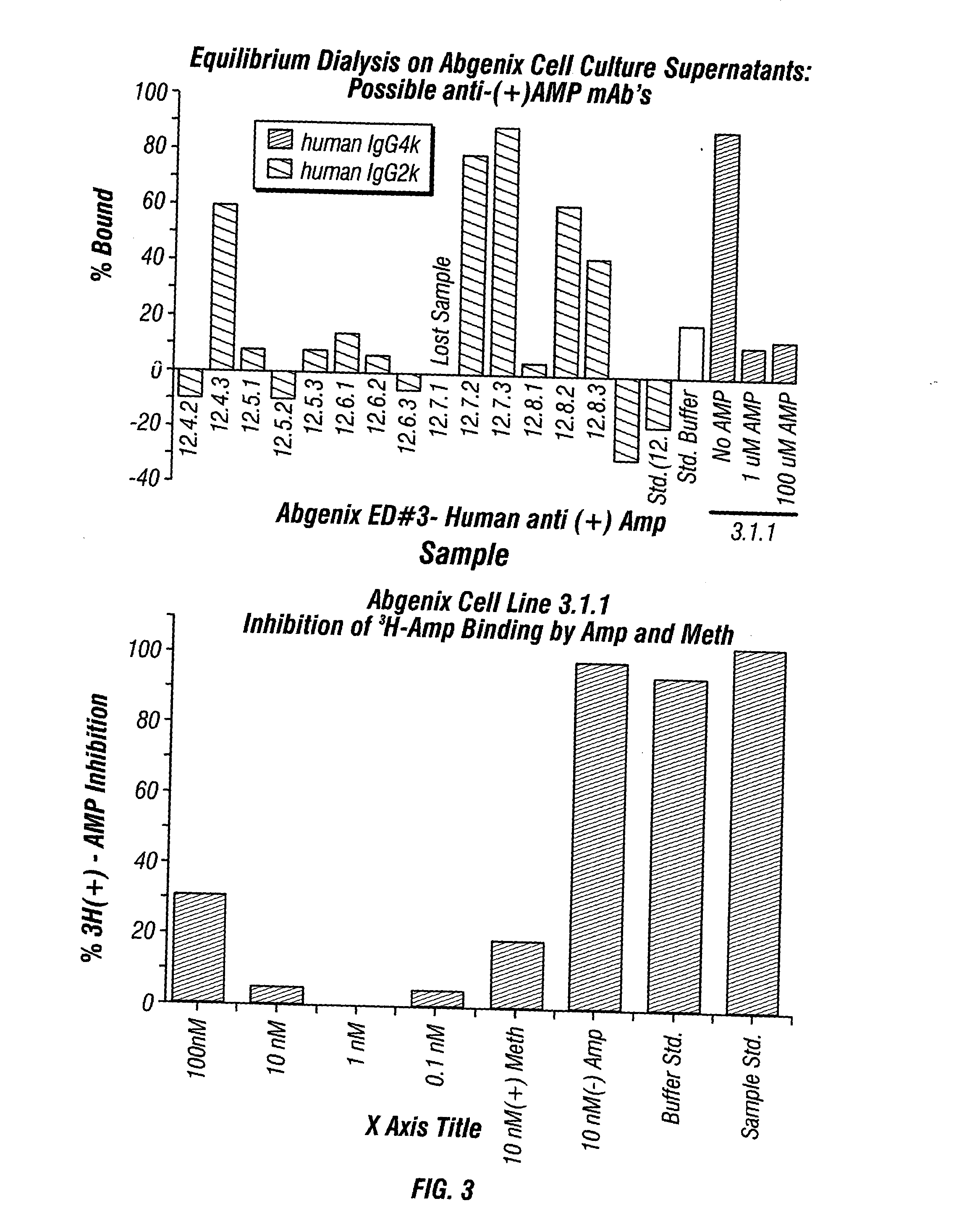Antibodies against drugs of abuse
a technology for drugs and antibodies, applied in the field of antibodies, can solve the problems of drug abuse, drug overdose, numerous health problems, etc., and achieve the effect of reducing the drug exposure to the fetus
- Summary
- Abstract
- Description
- Claims
- Application Information
AI Technical Summary
Benefits of technology
Problems solved by technology
Method used
Image
Examples
example 1
Haptens
[0103] One hapten that is useful in raising antibodies against amphetamine is (S)-(+)-4-(5-Carboxypentyloxy) amphetamine HCl. This hapten has a molecular weight of 310.82 and is hereinafter referred to as Amp(+)MO6. In preferred embodiments, this hapten is attached to a carrier molecule such as Bovine Serum Albumin, Keyhole Limpet Hemocyanin (KLH), or another large molecule which is capable of inducing an antibody response.
example 2
Antibody Structures
[0104] Examples of amino acid sequences of anti-amphetamine antibodies are disclosed in Tables 1 and 2. Nucleotide sequences of anti-amphetamine antibodies are shown in Tables 3 and 4. Table 1 shows the amino acid sequence for a series of heavy chain variable regions of anti-amphetamine antibodies. Table 2 shows the amino acid sequences of for a series of light chain variable domains of anti-amphetamine antibodies. Table 3 shows the nucleotide sequence for the heavy chain variable regions of a series of anti-amphetamine antibodies. Table 4 shows the nucleotide sequences for the light chain variable regions of a series of anti-amphetamine antibodies.
example 3
Synthesis of Hapten-Protein Conjugate
[0105] Each drug-like hapten was covelantly bound to a protein by a direct reaction using carbodiimide as the coupling agent (1-step procedure). For this synthesis, a six-fold molar excess of hapten was added and 10×EDCI as compared to the protein. See “A Simple Modified Carbodiimide Method for Conjugation of Small Molecular-Weight Compounds to Immunoglobulin G with Minimal Protein Crosslinking.”, Davis and Preston, Anal Biochem, 116, 402-407, 1981; Owens et al., JPET, Vol. 246, No. 2, p. 472-478, 1988. In this experiment, a KLH conjugate was used to conjugate to the amphetamine hapten.
[0106] The following abbreviations apply to this experiment: [0107] Amp(+)MO6 refers to (S)-(+)-4-(5-Carboxypentyloxy) amphetamine HCl, m.w. =310.82 mg / mM. [0108] KLH refers to Inject Keyhole Limpet Hemocyanin, m.w. =6,700,000 g / M or mg / mM (Inject Keyhole Limpet Hemocyanin, Product #77100, Pierce, Rockford, Ill.). [0109] DMF refers to N,N-Dimethyl Formamide, few....
PUM
| Property | Measurement | Unit |
|---|---|---|
| Therapeutic | aaaaa | aaaaa |
Abstract
Description
Claims
Application Information
 Login to View More
Login to View More - R&D
- Intellectual Property
- Life Sciences
- Materials
- Tech Scout
- Unparalleled Data Quality
- Higher Quality Content
- 60% Fewer Hallucinations
Browse by: Latest US Patents, China's latest patents, Technical Efficacy Thesaurus, Application Domain, Technology Topic, Popular Technical Reports.
© 2025 PatSnap. All rights reserved.Legal|Privacy policy|Modern Slavery Act Transparency Statement|Sitemap|About US| Contact US: help@patsnap.com



